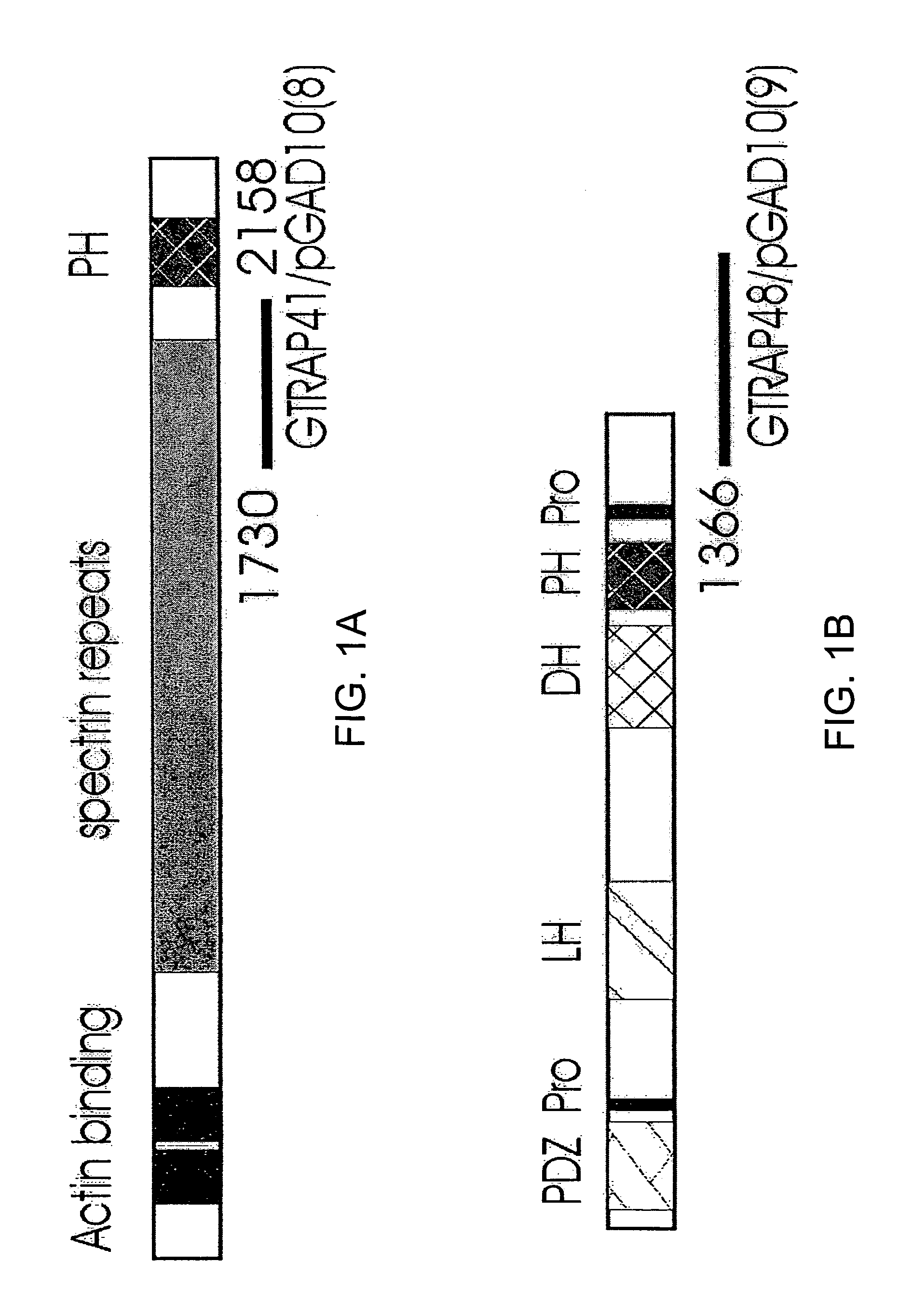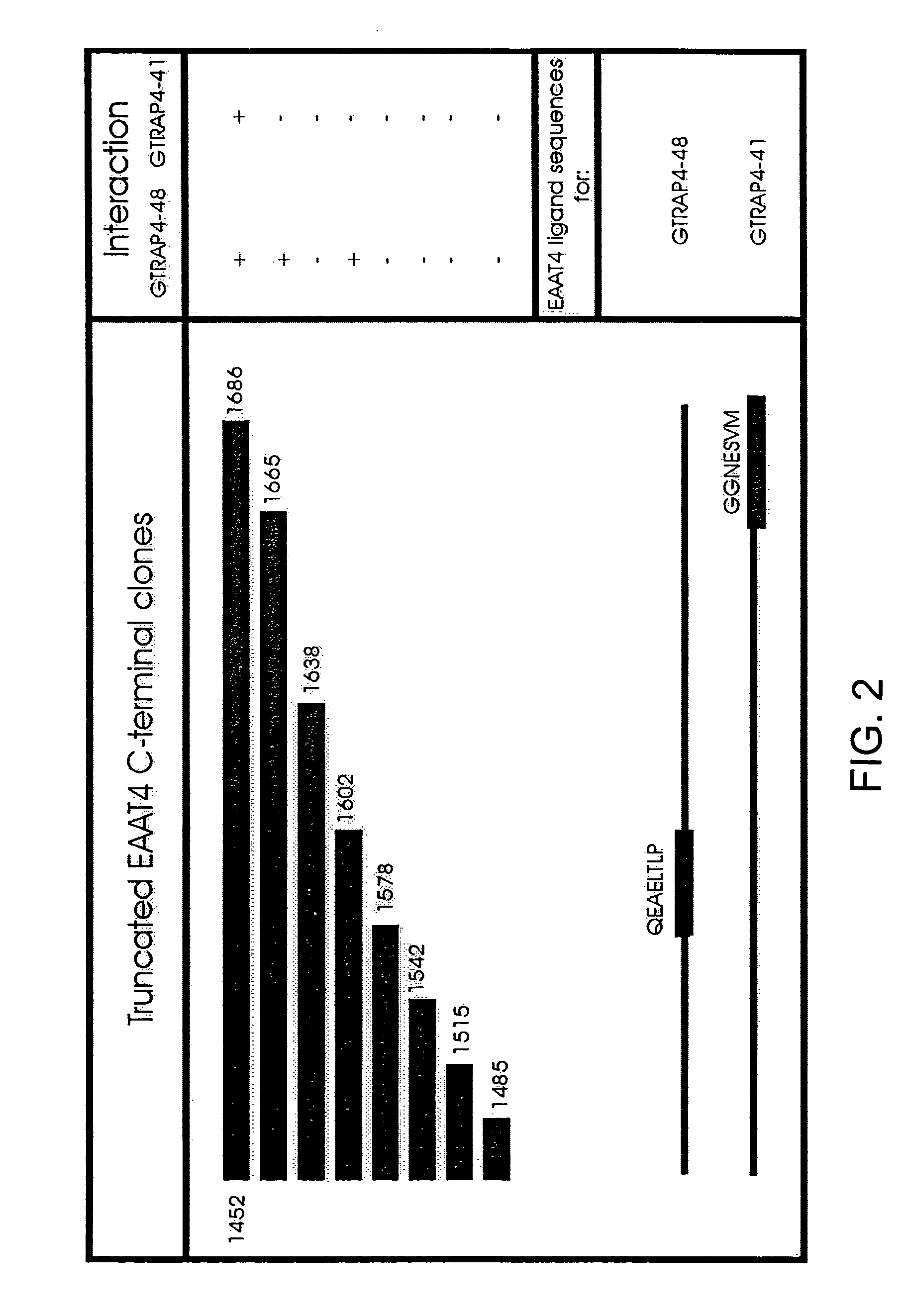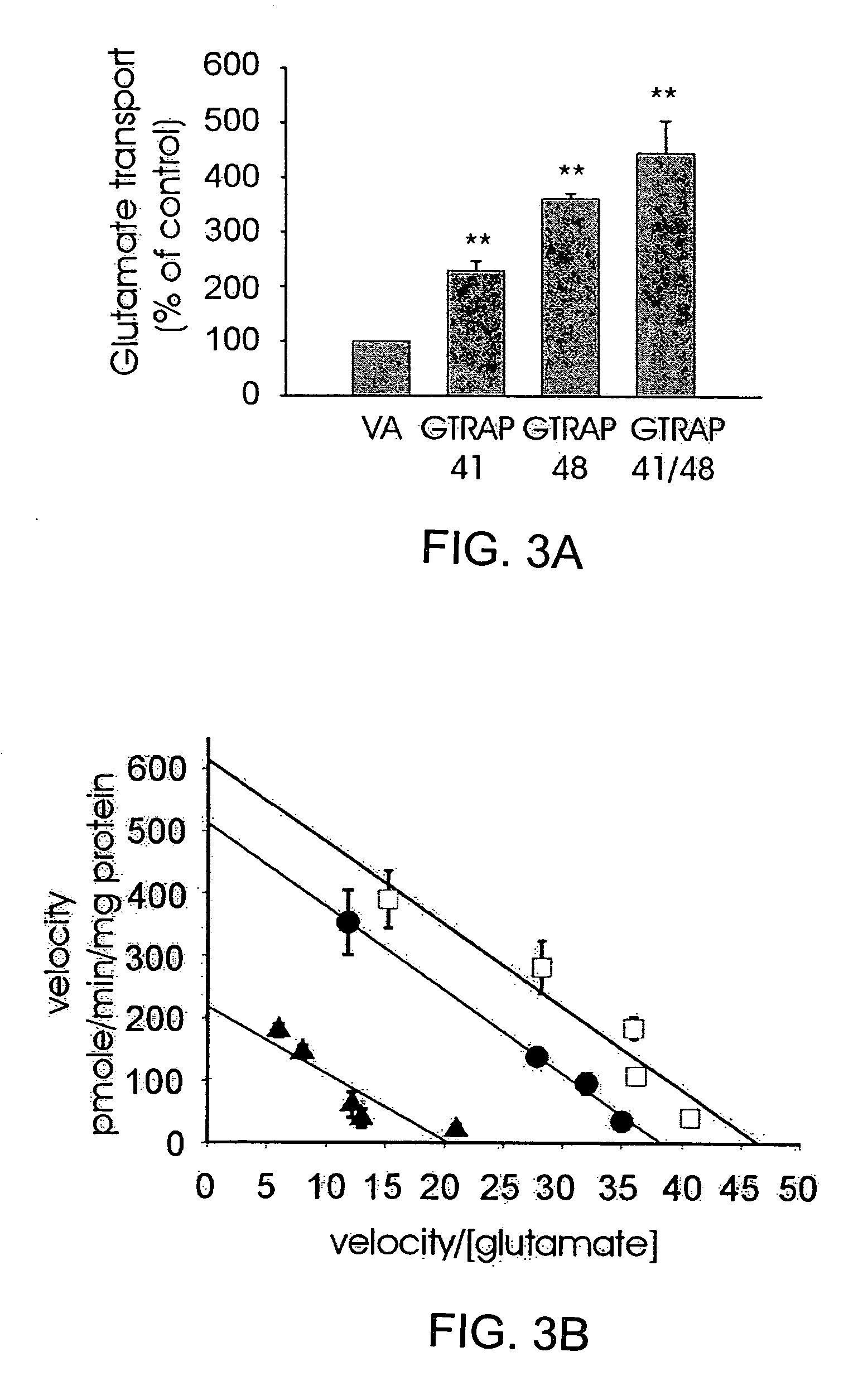Glutamate transporter associated proteins and methods of use thereof
a glutamate transporter and associated protein technology, applied in the field of proteinprotein interaction, can solve the problems that the dysregulation of the glutamate transporter eaac1 could also have pathological consequences
- Summary
- Abstract
- Description
- Claims
- Application Information
AI Technical Summary
Benefits of technology
Problems solved by technology
Method used
Image
Examples
example 1
Identification of Proteins Interacting with Glutamate Transporter Proteins
[0182]Yeast Two-Hybrid with EAAT4 Yeast two-hybrid screens were performed using the HF7c′ yeast strain harboring the reporter genes HIS 3 and β-galactosidase (β-gal) under the control of GAL4 activation. The final 77 amino acids of EAAT4 (carboxy-intracellular domain SEQ ID NO:12) were subcloned in-frame into pGBT9 (GAL4 binding domain vector, CLONTECH) and used to screen a rat brain cDNA library constructed in pGAD10 (GAL4 activation domain vector, CLONTECH). The plasmids were transformed into HF7c′ yeast cells and positive clones selected on triple-minus plates (Leu-, Trp-, His-) and assayed for β-galactosidase activity. Positive clones were co-transformed with either the bait vector or the original pGAD10 vector into yeast cells to confirm the interaction. For a subsequent EAAT4 C-terminal domain analysis, different regions of the final 77 amino acids of EAAT4 were subcloned in-frame into the pGBT9 vector.
[...
example 2
Isolation and Primary Structure of Glutamate Transporter Associated Proteins
[0184]Cloning of full-length GTRAP4-41 and GTRAP4-48 cDNAs. Marathon cDNA amplification (CLONTECH) was used to perform both 5′- and 3′-RACE on cDNA synthesized from rat brain poly(A)+ RNA. The double-stranded cDNA was ligated to the Marathon cDNA Adaptor which contains an adaptor primer (AP1) binding site. The 1.1 kb GTRAP4-41and 1.4 kb GTRAP4-48 cDNA fragments identified using the yeast two-hybrid system were used to design gene-specific primers (GSPs) which could be used in 5′- and 3′-RACE PCR reactions along with the AP1 primer. The RACE products obtained were sequenced and new GSPs designed, generating a series of overlapping RACE products, which were joined together by PCR. Overlapping RACE products were put through ten cycles of denaturation, annealing and extension in the absence of primers. Nested primers were added and the PCR continued for a further 20 cycles to amplify the overlapped template.
[018...
example 3
Antibodies
[0188]Generation of Polyclonal GTRAP4-41 and GTRAP4-48 Antibodies. Affinity purified polyclonal antisera to EAAT4, GTRAP4-41 and GTRAP4-48 were produced using methods identical to previous studies (Rothstein et al., Neuron (1994) 13:713-725. Synthetic peptides corresponding to epitopes of EAAT4 (carboxy-terminal; EKGASRGRGGNESA; SEQ ID NO:14 and amino-terminal; KNSLFLRESGAGGGCL; SEQ ID NO:15), rat GTRAP4-41 (KRGPAPSPMPQSRSSE; SEQ ID NO:16) and rat GTRAP4-48 (KTPERTSPSHHRQPSD; SEQ ID NO:17) were synthesized. Monospecific antibodies to GTRAP4-41 and 4-48 were produced.
[0189]The affinity-purified GTRAP4-41 antibodies recognize a 270 KDa protein in HEK 293T cells transfected with the full-length GTRAP4-41 cDNA and the affinity-purified GTRAP4-48 antibodies recognized a 170 KDa protein in HEK 293T cells transfected with the full-length GTRAP4-48 cDNA
[0190]Generation of Polyclonal GTRAP3-18 Antibodies. Affinity purified polyclonal antisera to GTRAP3-18 was produced as described ...
PUM
| Property | Measurement | Unit |
|---|---|---|
| temperature | aaaaa | aaaaa |
| temperature | aaaaa | aaaaa |
| relative molecular mass | aaaaa | aaaaa |
Abstract
Description
Claims
Application Information
 Login to View More
Login to View More - R&D
- Intellectual Property
- Life Sciences
- Materials
- Tech Scout
- Unparalleled Data Quality
- Higher Quality Content
- 60% Fewer Hallucinations
Browse by: Latest US Patents, China's latest patents, Technical Efficacy Thesaurus, Application Domain, Technology Topic, Popular Technical Reports.
© 2025 PatSnap. All rights reserved.Legal|Privacy policy|Modern Slavery Act Transparency Statement|Sitemap|About US| Contact US: help@patsnap.com



